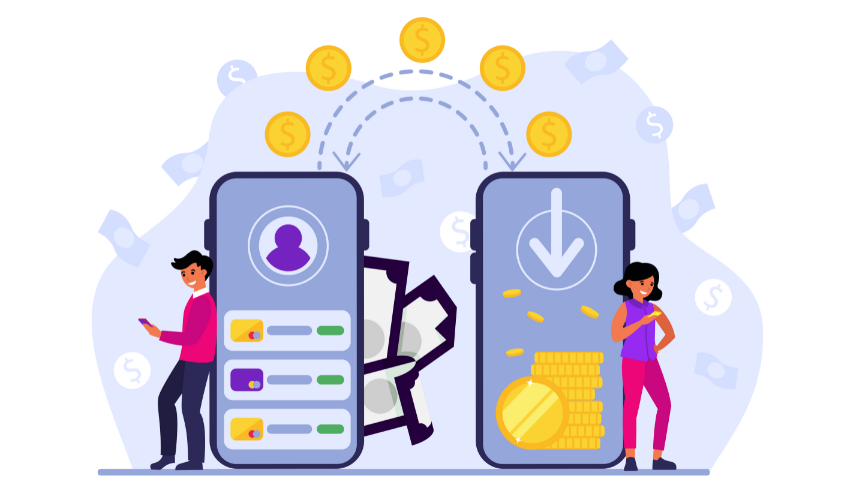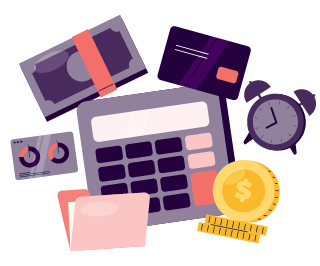Electronic Funds Transfer - Definition and Examples of EFT Payment
Information technology applied in banking helps to launch convenient digital products and services and serve customers. Electronics funds transfer is one of the digital methods.
Here is some EFT fundamental information by VNEXT Global.
1. Definition of Electronic Funds Transfer
An electronic funds transfer (EFT) is a digital way to move money across an online network, between banks and people, without the need for paper-based payment methods like checks and cash. EFT is a general term for all electronic payments and is a broad term that covers any type of digital transaction, such as debit cards, credit cards, e-wallets, ATM withdrawals, and wire transfers. EFT payments are frequently used in place of paper-based payment methods, such as checks and cash, to make transactions faster and safer. You can use EFT payments to pay bills, send and receive money instantly.

2. Examples of Electronic Funds Transfer
These are just some of the examples of EFT payments that you may encounter in your daily life:
• Direct deposit
This is when your employer or a government agency deposits your paycheck or benefits directly into your bank account. This is a convenient and secure way to receive your income without having to cash a check or visit a bank branch. You can also use direct deposit to send money to other people's accounts, such as your family or friends. Direct deposit is one of the most common types of EFT payments.
• Debit card
This is a plastic card that you can use to pay for goods and services at merchants that accept it. When you use a debit card, the money is deducted from your checking or savings account immediately. You can also use a debit card to withdraw cash from an ATM or make online purchases. Debit cards are widely used around the world as a convenient and safe alternative to cash.
• Online bill pay
This is a service that allows you to pay your bills electronically through your bank's website or app. You can set up recurring payments for regular bills, such as rent, utilities, or credit cards, or make one-time payments for occasional bills, such as taxes, medical fees, or donations. Online bill pay can help you save time and money, as well as avoid late fees and penalties.
• Mobile payment
This is a way to pay for things using your smartphone or other mobile device. You can use popular apps like PayPal to send and receive money instantly with other people who have the same app. You can also use apps like Apple Pay, Google Pay, and Samsung Pay to pay at stores that have compatible terminals. Mobile app payments are becoming more popular as they offer convenience, speed, and security.
 .
.
3. EFT regulation that banks need to know
The regulation of EFT applications in banks is mainly governed by the Electronic Fund Transfer Act (EFTA) and Regulation E, which are issued by the Federal Reserve Board. The main purpose of these regulations is to protect consumers who use EFT services from fraud, errors, and unauthorized transactions.
Some of the key provisions of EFTA and Regulation E are:
• Consumers have the right to receive disclosures from their financial institutions about the terms and conditions of their EFT services, such as fees, limits, liability, and error resolution procedures.
• Consumers have the right to receive periodic statements from their financial institutions that show their EFT activity, such as the date, amount, and type of each transfer.
• Consumers have the right to stop payment of preauthorized transfers under certain conditions and to revoke their authorization for future transfers.
• Consumers have the right to report any errors or unauthorized transfers within 60 days of receiving their statement and to have their financial institutions investigate and correct any errors within 10 business days (or 45 business days in some cases).
• Consumers have limited liability for unauthorized transfers if they report them within two business days of learning about them. Their liability increases to $500 if they report them within 60 days and to the full amount if they report them after 60 days.
• Financial institutions are prohibited from imposing any fees or charges for EFT services that are not disclosed to consumers or that are not authorized by consumers.
• Financial institutions are prohibited from requiring consumers to use EFT services as a condition of extending credit or providing any other service

4. EFT application in the bank system
Banks should apply EFT payment in their systems if they want to offer their customers and employees a fast, convenient, and secure way to transfer money electronically. EFT is a technology that allows money to move across an online network, between banks and people, without the need for paper-based payment methods like checks and cash.
EFT has many benefits for banks, such as:
• Reducing operational costs and risks associated with handling, processing, and storing physical payments.
• Increasing customer satisfaction and loyalty by providing them with more options and flexibility to pay and receive money.
• Enhancing security and compliance by using encryption, authentication, and verification to prevent fraud, errors, and unauthorized transactions.
• Improving efficiency and productivity by streamlining workflows, automating transactions, and reducing errors and delays.
However, EFT also has some challenges and drawbacks for banks, such as:
• Requiring significant investments in technology, infrastructure, and security to implement and maintain EFT systems.
• Facing regulatory and legal issues related to consumer protection, data privacy, anti-money laundering, and cross-border transactions.
• Dealing with technical glitches, network failures, cyberattacks, and human errors that can disrupt or compromise EFT services.
• Adapting to changing customer expectations, preferences, and behaviors regarding EFT services.
Electronic funds transfer payments can also help banks to access new markets, attract new customers, and compete with other financial institutions. But it also creates some challenges for any bank.
Therefore, banks should carefully weigh the pros and cons of applying EFT in their systems before making a decision. Organiztions should also consider the availability and affordability of EFT payment solutions and the best practices and standards of EFT services.

FINAL THOUGHT
If you are looking for a trusted provider for finance solutions- electronic funds transfer for example, VNEXT Global is the ideal choice. With 14+ years of experience, we certainly can help you to optimize your business digitalization within a small budget and a short time. With a customer-centric approach, we provide effective and transparent communication, timely and reliable support. Currently, we have 400+ IT consultants and developers in Finance, Healthcare, Mobile App, Web App, System Development, Blockchain Development and Testing Services. We have provided solutions to 600+ projects in several industries for clients worldwide. We are willing to become a companion on your way to success.
Please feel free to drop us an email when it is convenient for you to have an online meeting to discuss this further. Have a productive day!












